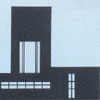-
Similar Content
-
Astro update
By Barry Cade,
- 2 replies
- 976 views
-
- 922 replies
- 139,779 views
-
Will Clio be write off? Update... 1 2
By FakeConcern,
- 53 replies
- 5,578 views
-
Rover 800s - Fleet update 1 2 3
By Austin-Rover,
- 82 replies
- 17,555 views
-
Updated adventures of the triumph toledon't
By MrsJuular,
- 18 replies
- 1,867 views
-







Recommended Posts
Create an account or sign in to comment
You need to be a member in order to leave a comment
Create an account
Sign up for a new account in our community. It's easy!
Register a new accountSign in
Already have an account? Sign in here.
Sign In Now